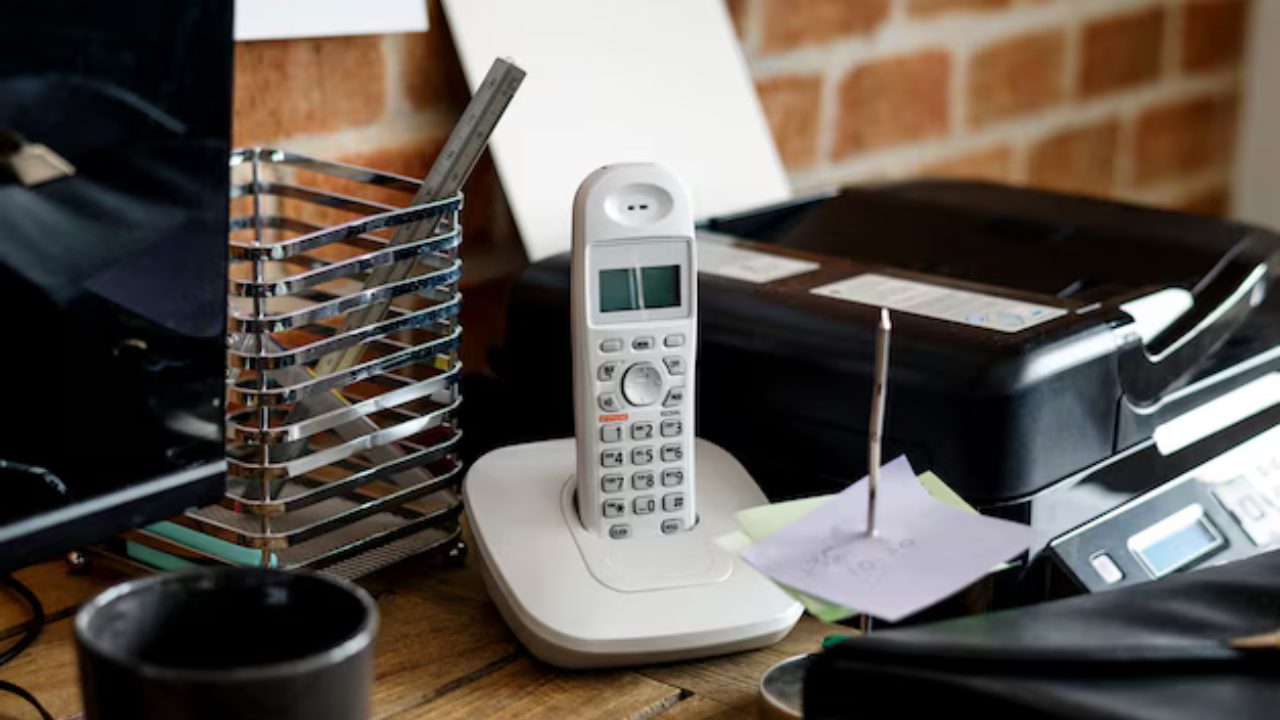Introduction
In the ever-evolving landscape of internet technology, the phrase “Dial Up Device NYT” may seem like an unusual pairing. However, the legacy of dial-up devices holds a unique position in internet history, and the New York Times (NYT) has often explored this intersection of past technology with today’s digital advancements. While dial-up internet is largely considered a remnant of the late 20th century, its impact is undeniable, and discussions about it continue to appear in the NYT’s coverage on internet connectivity.
This article examines the relevance of “Dial Up Device NYT” in the digital era, delving into the technological roots of dial-up, its impact on early internet users, and how the New York Times has contextualized this technology’s role in the broader story of internet evolution.
What is a Dial up Device NYT?
A dial up device nyt is a modem that connects to the internet using a telephone line. Popular in the 1990s and early 2000s, dial-up devices work by converting digital data into analog signals that travel through phone lines to an Internet Service Provider (ISP). This method of connectivity was crucial for early internet users, and it gave rise to the familiar sound of a modem dialing in, creating a connection that signified access to a new, online world.
Today, though largely replaced by high-speed broadband and fiber-optic connections, dial-up devices are remembered as key players in the development of internet connectivity. The phrase “Dial Up Device NYT” often appears in articles exploring the history of internet access, reminding readers of the milestones that paved the way for today’s technology.
The Role of Dial-Up Devices NYT in Early Internet Usage
During the internet’s early days, dial-up devices nyt provided essential access to online resources, fundamentally changing communication and information access for everyday users. Before broadband became widespread, dial-up technology was the primary way to connect to the internet, although it came with challenges like slower speeds and frequent disconnections. Despite these limitations, dial-up devices connected users to email, online communities, and the first generation of social media.
The nostalgia for dial-up technology reflects a time when the internet was slower but more novel, providing an important foundation for the fast-paced digital landscape we experience today. The New York Times has covered dial-up devices extensively, especially in articles that look back on early internet technology to highlight just how far connectivity has come.
How the New York Times Covers Dial-Up Devices NYT
For years, the New York Times has been a trusted source for updates on technological trends and changes in internet culture. When discussing the evolution of internet connectivity, the “Dial Up Device NYT” phrase often surfaces as a way of comparing early internet experiences with today’s near-instantaneous digital interactions. The NYT frequently references dial-up devices to illustrate the shift from slow, dial-in connections to today’s high-speed networks, demonstrating how foundational technologies led to modern advancements.
Through the NYT’s lens, “Dial Up Device NYT” also serves as a historical reference, underscoring the achievements in internet connectivity. By reflecting on the early limitations and accomplishments of dial-up devices NYT continues to provide readers with a sense of the incredible progress in digital communication.
Why “Dial Up Device NYT” Still Matters

Even though dial-up is largely obsolete, the phrase “Dial Up Device NYT” remains relevant for historical and technological discussions. The legacy of dial-up devices is crucial in understanding the roots of internet culture and the challenges that early developers overcame to build today’s high-speed infrastructure. By tracing this journey, the New York Times connects past milestones with the latest trends, keeping readers informed and helping them appreciate the full arc of internet evolution.
Why Are Dial-Up Device NYT Still Relevant in the Modern Era?
Although dial-up devices are no longer the primary choice for internet connectivity, they still maintain a presence in certain niches. In remote areas and rural locations lacking broadband infrastructure, dial-up devices continue to serve as an essential means of internet access. For hobbyists and retro technology enthusiasts, these devices are a relic of the past, representing a bygone era of internet technology that still holds sentimental value.
In addition, dial-up device nyt remain relevant in specific industries, including satellite communications and legacy systems, where the simplicity, affordability, and reliability of dial-up technology fulfill unique requirements. Despite the dominance of modern broadband technologies, dial-up’s role in certain fields ensures its ongoing relevance.
How Dial-Up Devices Are Depicted in the Media, Including Dial Up Device NYT
The term dial up device nyt refers to how dial-up devices are featured and discussed in the media, particularly in articles by the New York Times, which often highlight their role in the broader story of internet evolution. Historically, dial-up technology is portrayed as a foundational milestone in the development of online connectivity. The dial up device nyt mentions are typically found within discussions that examine the transition from older technologies to modern broadband systems.
Recent articles from the New York Times have explored the enduring influence of dial-up connections, comparing them with the high-speed internet options like fiber optics and 5G that dominate the market today. Through these comparisons, dial up device nyt provides valuable context about how far internet technology has come since its humble beginnings with dial-up.
The Future of Dial-Up Devices: Will They Ever Make a Comeback?
As internet speeds continue to increase with the widespread adoption of broadband, fiber-optic, and 5G technologies, the likelihood of dial-up devices making a significant comeback seems remote. However, their place in internet history remains secure. In areas where advanced infrastructure is still lacking, dial-up devices may continue to serve as a vital fallback for basic connectivity.
That said, the future of internet technology is focused on innovations like fiber-optic broadband and 5G networks, which promise faster and more reliable connections. While dial-up devices may never return to mainstream use, they will always be a reminder of how internet technology evolved.
Conclusion
The dial up device nyt highlights the importance of dial-up devices in shaping the internet landscape. While these devices are no longer commonly used for mainstream internet activities, their contribution to the early days of online connectivity cannot be overstated. The New York Times often includes references to dial-up devices as part of the historical narrative, illustrating the rapid advancement in internet technology.
For those interested in the history of internet devices or the cultural impact of early technologies, understanding the legacy of the dial up device nyt is crucial. It reminds us of the significant leaps that have been made, from the slow connections of dial-up to the lightning-fast internet we have today.
Frequently Asked Questions (FAQs) About Dial-Up Devices and NYT
Q: What is a dial-up device, and how does it work?
A: A dial-up device connects to the internet through a telephone line, using a modem to convert digital data into analog signals. These signals travel over the phone line to reach an Internet Service Provider (ISP), allowing users to access the web.
Q: Is dial-up internet still used today?
A: Yes, dial-up internet is still used in some rural and remote areas where broadband infrastructure isn’t available. However, its usage has significantly declined as faster and more reliable internet options have become more widespread.
Q: Why does the New York Times mention dial-up devices?
A: The New York Times often mentions dial-up devices in articles that focus on the history and evolution of the internet. These references help illustrate how internet technology has advanced from the early days of dial-up to the high-speed broadband and fiber-optic connections that dominate today.
Q: How fast is dial-up internet?
A: Dial-up internet typically offers speeds up to 56 kbps (kilobits per second), which is significantly slower compared to modern broadband, fiber-optic, or 5G connections that can reach speeds of up to 1 Gbps (gigabit per second).
Q: Can dial-up devices be used for modern internet activities?
Dial-up devices are generally too slow for activities like streaming videos, online gaming, or downloading large files. However, they can still handle basic tasks such as emailing, browsing simple web pages, and text-based communication.
Q: What role does the dial up device nyt play in the history of internet technology?
A: The dial up device nyt plays a crucial role in explaining the history of internet connectivity. It helps to frame the narrative of how far internet technology has come, offering readers insights into the early days of the internet, when dial-up devices were the norm.
Q: Will dial-up devices ever become popular again?
A: Given the rise of faster and more efficient technologies, the widespread use of dial-up devices is unlikely. However, their legacy remains important, especially in areas with limited access to broadband and in the context of the dial up device nyt‘s historical significance.
Stay in touch for the latest updates and alerts by visiting our site: Secret Class!



